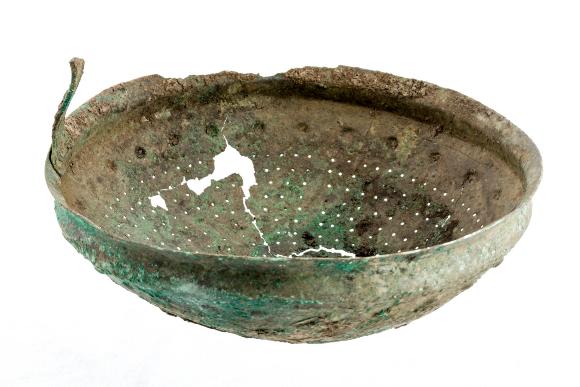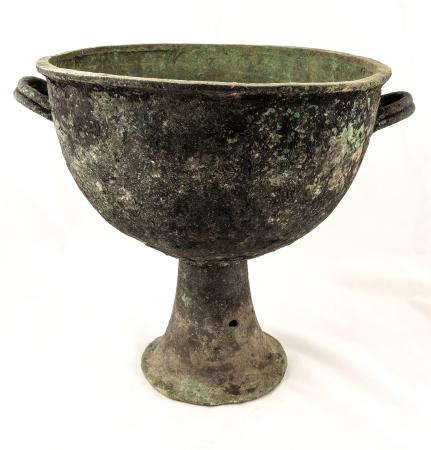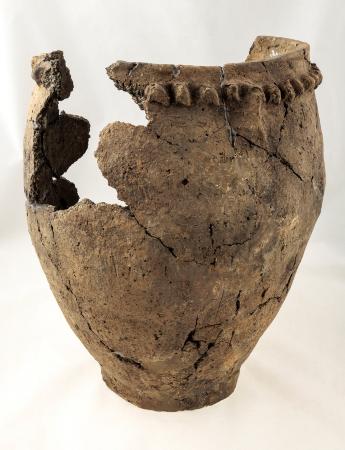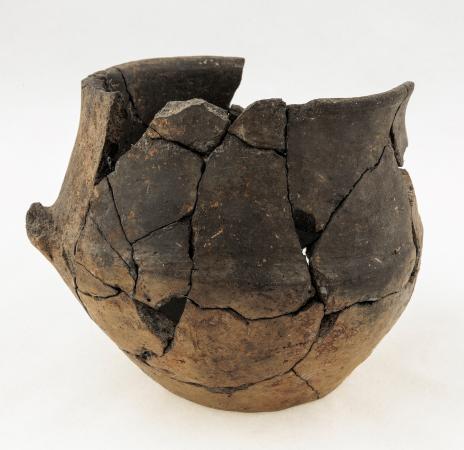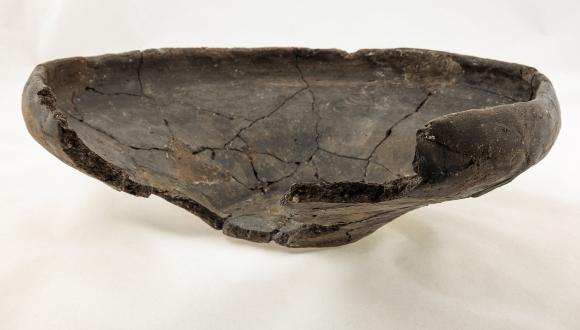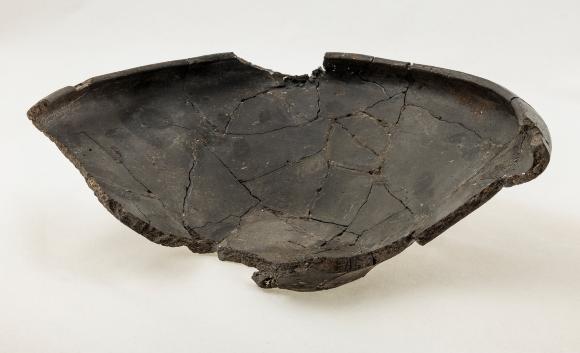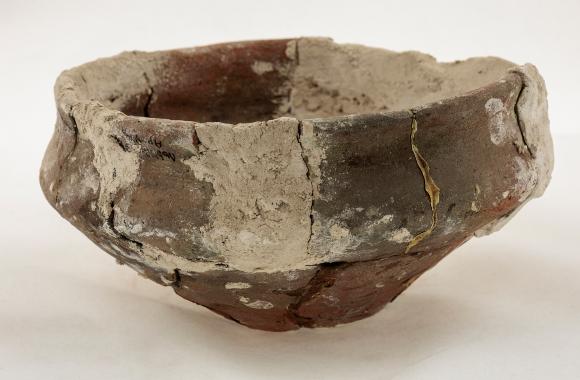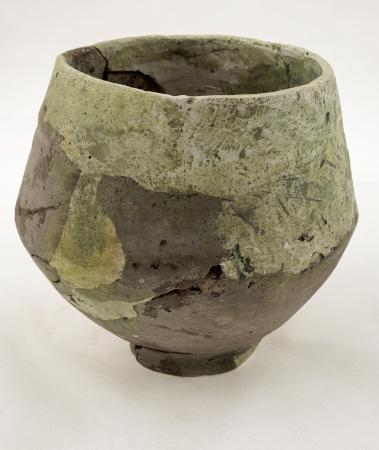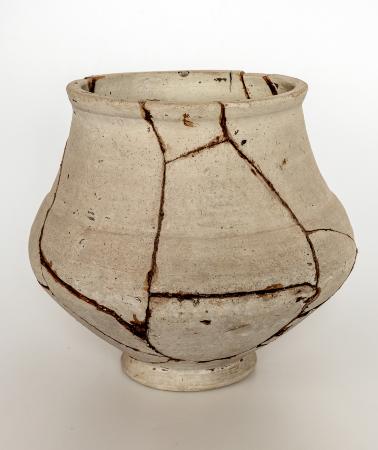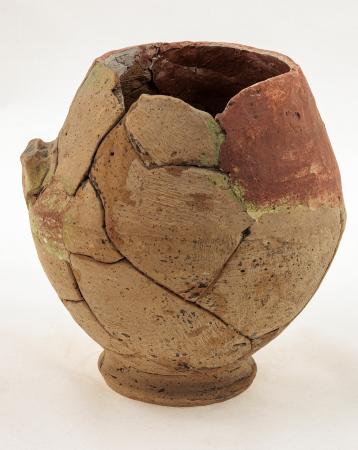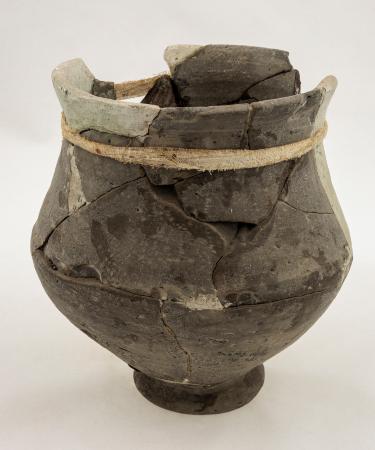Vessel with the Tree of life
- Inventory number:
- АР-149
- Creation Date:
- 4th - 3rd millennia BC
- Place of Creation:
- Koshylivtsi village, Ternopil region
- Provenance:
- Lviv Historical Museum
- Technique:
- molding
- Size:
- 22 x 24 cm
- Material:
- clay, paint
- Type of object:
- Vessel
- Subject:
- Cucuteni–Trypillia culture
The vessel is pear-shaped with a very narrow neck and a flat bottom. It has two small round handles. The body of the vessel is painted white on the outside, while the neck is red. In the middle part, there is a plant ornament consisting of two lines from which small branches and diagonal black lines extend sideways and upward. The plant ornament is outlined with black and red stripes at the top and bottom. There are many interpretations of this popular symbol among the Cucuteni-Trypillians, with the most common being the representation of the Tree of Life as a symbol of family protection. Some believe that this symbol may also confirm the existence of a Mother Goddess cult (also as a protector of the family) or represent much deeper cosmological beliefs. Archaeologist Vikentiy Khvoyka discovered the first Cucuteni-Trypillian settlement in present-day Ukraine in 1893–1894 on 55 Kyrylivska Street in Kyiv. However, the culture was named after the village of Trypillia of Kyiv Region. The area of its spread in Eastern Europe ranged from the Dnipro River to the Carpathians, from Polissia to the Black Sea and the Balkan Peninsula. The settlements of the Trypillians covered a significant area and are referred to as proto-cities. One of the distinguishing features of this culture was the burning of their homes, which could have been caused by soil depletion, a lack of resources for livestock grazing, or perhaps it had a ritual significance. The Trypillians were primarily engaged in cultivation, grain farming, fishing, pottery, weaving, metallurgy (including copper processing), and animal husbandry.



